READY TO GET STARTED?
REQUEST A FREE ESTIMATE
Fill out the form below or call (855) 789-9807 for a free, no-obligation estimate.
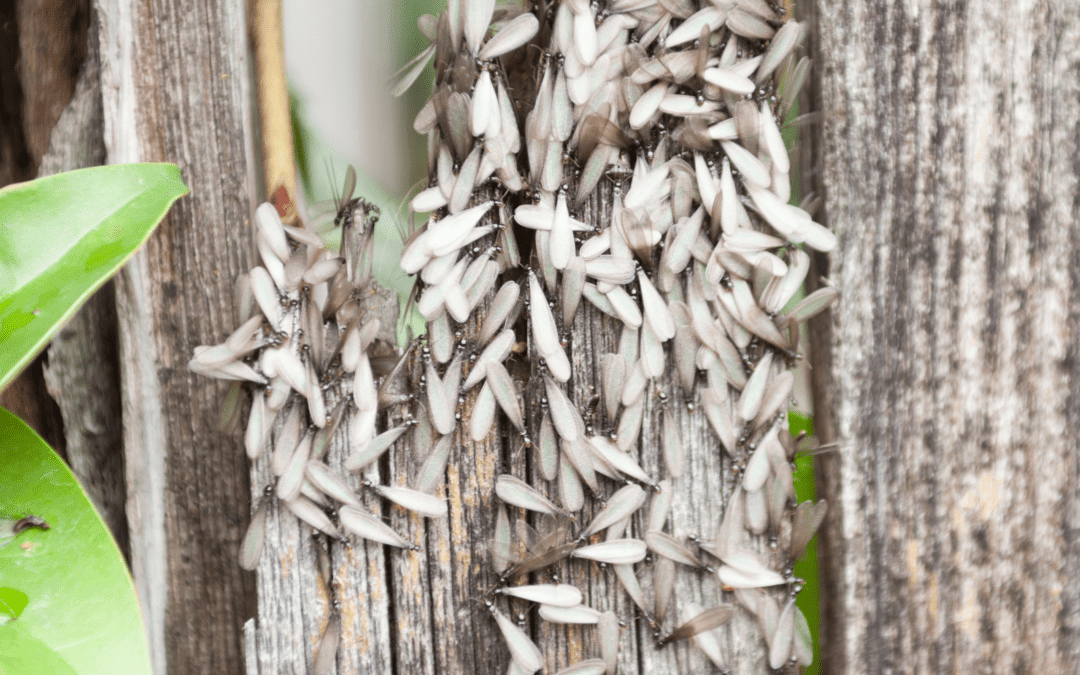
For most homeowners, including those in Bonita Springs, the first sign of a termite infestation is seeing a swarm of flying insects. Not all swarming insects are termites though – some can be flying ants. Let’s break down the physical characteristics to determine the differences between the two.
There are three easy ways to tell flying ants and termites apart:
These two pests also have behavioral differences. They both live in large colonies with designated levels of caste systems. Termites can also be found in decaying trees, stumps, wood debris, lumber, and wooden structures. Some ants, like carpenter ants, inhabit wood, but most other species do not. Unlike ants, termites can cause major structural damage since they eat wood, and ants do not.
They also have different life cycles. Ants go through four stages of development, while termites only have three. During the warm months of swarming season, the fertile winged ants and termites fly from their nests to mate and establish new colonies, making it more difficult to tell the difference between the two pests.
If you believe you have termites causing damage to your home, reach out to your local Bonita Springs pest control company, who can provide a free inspection and a service plan that is right for you and your property.
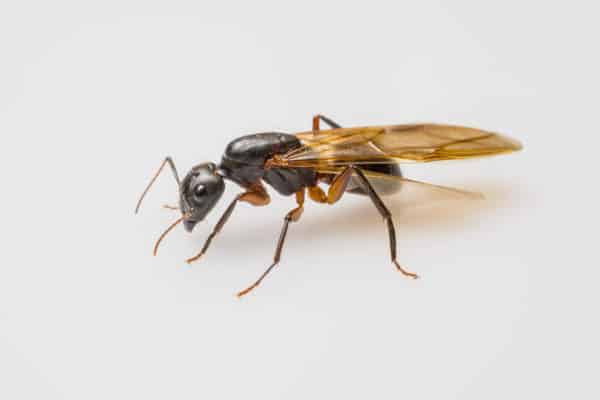
You’re lounging outside enjoying the peaceful outdoors when a flying pest zooms past you. You then realize it’s actually a flying ant! Don’t worry! Flying ants are actually very common, especially during seasons of high humidity. While flying ants are not a huge threat to humans, they can be a major nuisance, especially if they enter your home.
Flying ants swarm for the same reasons that termites swarm which is to reproduce and expand their colonies. These pests will swarm in late spring and the early summer when there’s bright sunlight and warm temperatures. Flying ants also prefer to swarm 3 to 5 days after a rainstorm.
While flying ants won’t cause damage to your home, they can make their way inside. It’s important to know what prevention steps to take when dealing with these pests.
Remember, if you see them flying by outside, don’t be too alarmed. If they end up inside your home, however, it’s always best to call your local pest control company who can determine the best plan of action.
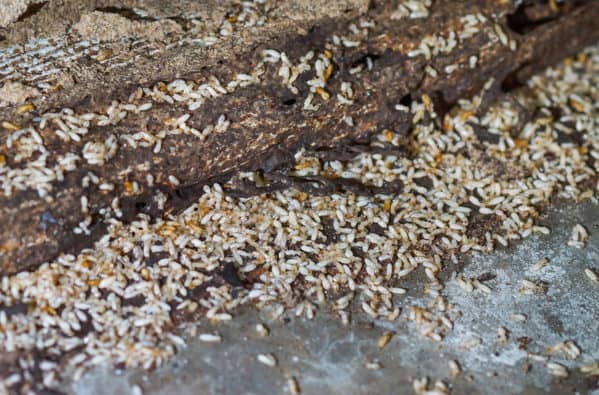
Termite infestations can cause significant (and expensive) structural damage to your home and property. What makes termites even worse is they usually cause significant damage for a long period of time without being detected.
Spring is an especially critical time for identifying and dealing with termites because that is the time of year when termites swarm to establish new colonies. These swarmers are winged adult termites that mature and fly away from their colonies to continue reproducing. Termite swarming season begins at different times for different species but all of them typically begin when the weather warms up following a significant rain event. For most species like subterranean termites, this falls in early spring. Age is also a factor in determining when termite colonies will swarm. While there is no specific age for a colony to swarm, most colonies aren’t mature enough until they are at least 3 years old.
Swarming termites often gather in areas with low-wind and diffuse light. Swarms can occur over a period of several days. Termite swarms are often confused with flying ant swarms. There are 3 major differences between termites and flying ants: antenna, wings, and body segments. Termites have straight antennae with a slight drooping look while flying ants have antenna that are bent at a 90 degree angle as they come out the side of their heads. Termite wings are basically equal in length while flying ants have front wings that are noticeably longer than their hind wings. Finally, termites have 2 body segments with straight abdomen while flying ants have 3 distinct body segments that narrow at the waist.
Odds are if you notice a termite swarm in or around your property the initial nesting site is not too far away. Termite swarms are a good indication that a termite infestation is imminent. Swarming termites also discard their wings after their new colony is established. Finding piles of discarded wings is also another sign that a new active termite colony is close by.
It is important to periodically check for signs of termites in your home to try and catch an infestation before the damage is significant (and costly).
If you notice a termite swarm this spring or any of these other signs of termites, it’s not too late to act but action should be taken sooner rather than later. With the help of a professional pest control company, you can take quick action for termite treatment while avoiding the costly headache of structural damage to your home. Whether you’ve dealt with termites in the past or just want to avoid dealing with them in the future, investing in termite protection now is always a good idea.
Where Are These Stinkbugs Coming From?
10 Common Myths About Pest Control
Keeping Wildlife Out This Spring
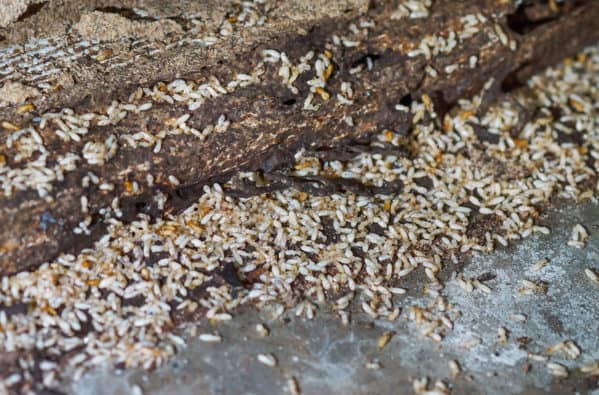
Termites cause billions of dollars in damage each year. Because they work from the inside out, infestations are often not found until significant damage has already been done. Spring marks the beginning of the termite swarming season and these destructive pests are found in most of the United States (except for Alaska). What do you need to know before swarming season starts to help control termites? Find out the answers to many of your termite questions below.
Termites swarm as the weather begins to warm, usually at the beginning of spring or summer and usually after a rain event. Termites swarm when they go in search of a location to establish a new colony. Colonies typically don’t produce a swarm until they have been established for at least 3 years.
If a swarm happens inside your home, most of them will not survive to establish a new colony but it does mean that your home is likely infested. If a swarm happens outside your home or if you notice just a few stragglers inside, your home is most likely not infested but a colony (or multiple colonies) are present nearby.
Swarming termites have one purpose – to reproduce and establish a new colony. In fact, they don’t have biting or chewing mouthparts to cause damage to your home. Several hundred swarmers are produced by each colony but only a small percentage of these actually survive to start the new colony.
Termites have straight antennae and wide bodies without pinched waists. They are usually black or dark brown in color. Swarming termites have wings that are the same length and clear in color. Termites are found in decaying stumps, trees, wood debris, lumber, and other wooden structures. They cause structural damage by eating wood and other cellulose-based products like paper.
Flying ants (also known as carpenter ants) have elbowed antennae and pinched waists. They can be black, brown or reddish in color. They have 2 pairs of wings that differ in size and are tinted brown in color. Carpenter ants also inhabit wood and wood structures; however, they don’t eat wood and therefore do not usually cause any structural damage. They do eat nectar, seeds, other insects, and food debris in and around your home.
Both termites and flying ants swarm as part of their mating process.
The main attractant to termites is food. Termites love to eat anything wood or cellulose-based including lumber, firewood, newspaper, and more. They also like warm, dark places that are undisturbed such as your crawlspace. They also thrive in moist soil, especially around your foundations.
While there are some do-it-yourself options you can do around your home, these are more suitable for termite prevention rather than termite control. Getting rid of termites is a job best left to the professionals. Some things you can do around your home to help prevent termites include:
There are two major types of termite treatment: liquids and baits.
Liquid termite treatments have been around for years. Their purpose is to provide a long-lasting barrier in the soil that keeps termites from entering and infesting buildings. This treatment also helps eliminate termites that are already inside structures as it prevents them from getting back to the soil for supplemental moisture.
Bait termite treatments use a cellulose-based food product combined with a slow acting pesticide. The bait stations are installed below the ground where termites eat the bait and share it with other termites in their colony. This leads to a gradual decline in the termite population infesting the structure.
If you suspect you have a termite problem, contact a professional termite control specialist. A thorough termite inspection by a trained pest control professional is critical in identifying and eliminating a termite infestation from your home.
Lawn Care: How to Keep Your Grass Green in the Summer
5 Ways To Prevent Bed Bugs When Traveling
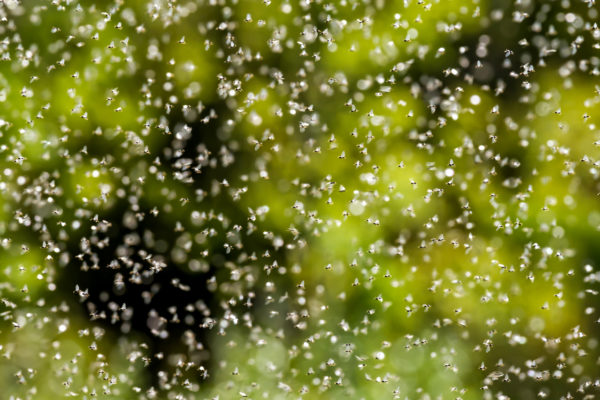
The change of season from winter to spring brings warm weather, sunshine, and … bugs! This is the time of year when many pests emerge from overwintering and begin the mating process. Spring is also known as swarm season – because this is the time when termites and flying ants emerge in droves, sometimes in swarms of thousands! While flying ants can cause problems in and around your home, termites are much more common – and much more costly! How can you tell if those swarming insects are terrible termites or flying ants? Check out our handy reference below for the key differences between the two, as well as what to do if you have these pests swarming in or near your home.
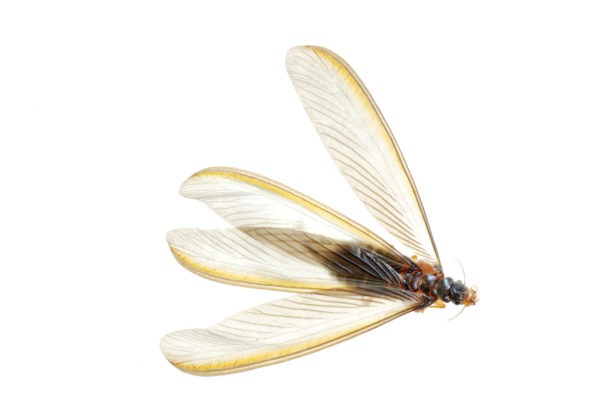
Termites usually swarm once a year for reproduction and expansion of their colonies. Swarms mark the official beginning of termite season. Subterranean termites swarm in spring and during the daytime. Drywood termites swarm in late summer and early fall. Dampwood termites swarm in the summer.
Termites swarm after their colony reaches a certain size and the weather conditions are optimal. The termites are attracted to light and are often found near windows and light fixtures. Swarming termites will try to squeeze through racks and crevices in your walls and foundations to try and reach open air. If you see swarming termites then there is a good chance there is a well-established termite colony in or near your home.

Flying ants will swarm in late spring and early summer. They have to have bright sunlight, low winds, high humidity, and warm temperatures to swarm. They prefer to swarm after there has been 3 to 5 days of rain.
Flying ants swarm for the same reasons as termites – to reproduce and expand their colonies. Flying ants don’t represent any greater threat to humans than their wingless counterparts. Flying ants aren’t as significant a threat to your home as termites but they can still cause damage. If you have flying ant swarms in your home there is a good chance you have an established ant colony in your walls.
So now that you can identify exactly what kind of pest is swarming around your home, what should you do next?